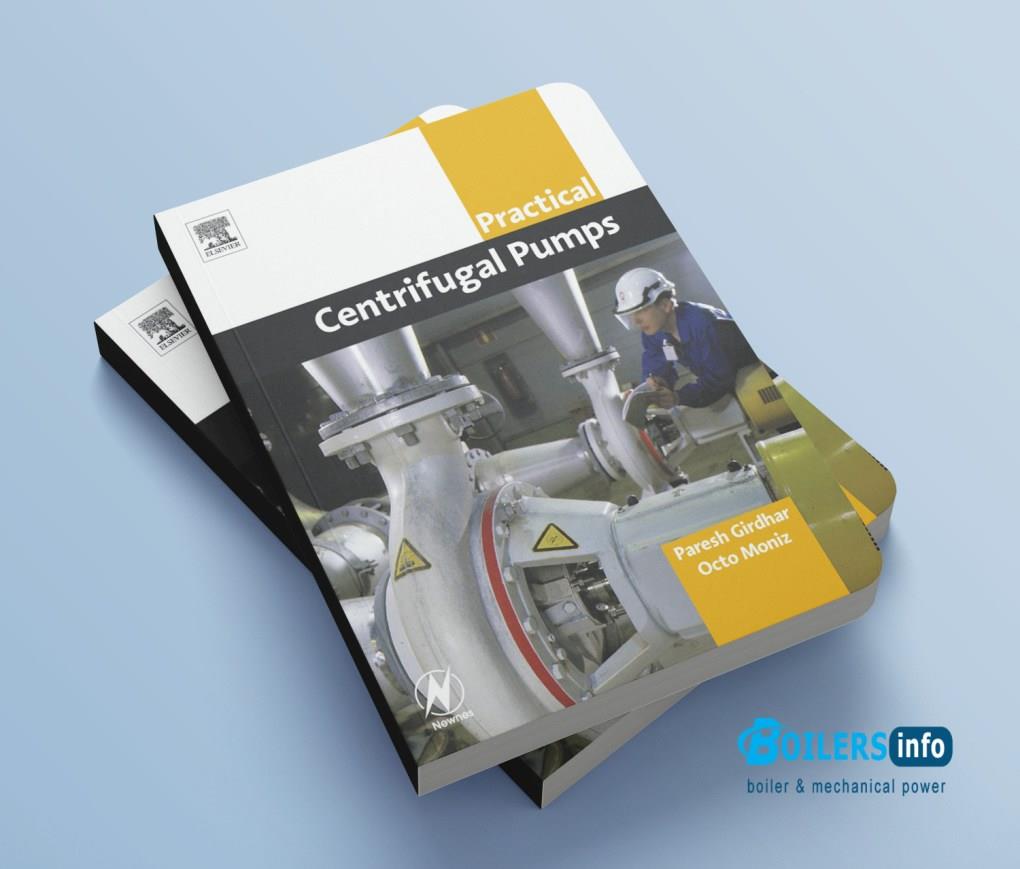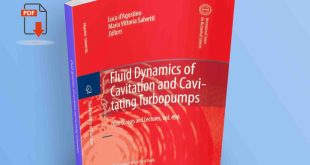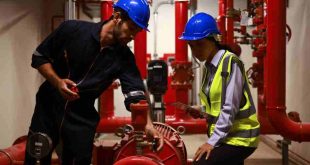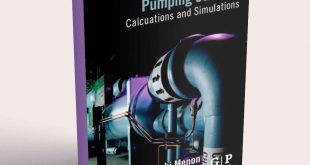
Practical Centrifugal Pumps: Design, Operation, and Maintenance
Centrifugal pumps are the cornerstone of fluid handling systems in various industries, from chemical processing and water treatment to power generation. These pumps are responsible for moving liquids by converting mechanical energy into fluid energy, typically through a rotating impeller. In this article, we explore the fundamental principles of centrifugal pump design, operation, and maintenance, along with key aspects such as pump hydraulics, specification, selection, and troubleshooting.
Introduction to Pumps
Pumps are mechanical devices designed to transfer liquids, gases, or slurries by imparting mechanical energy to the fluid. The primary function of a centrifugal pump is to increase the pressure of a fluid, facilitating its flow through pipes or systems. Centrifugal pumps are among the most commonly used pumps in industrial applications due to their simplicity, efficiency, and versatility.
Classification of Centrifugal Pumps
Centrifugal pumps can be classified based on different factors:
- Single-stage vs. Multi-stage Pumps:
- Single-stage pumps have one impeller and are used for applications where relatively low pressures are sufficient.
- Multi-stage pumps have two or more impellers in series, designed to achieve high-pressure outputs, commonly used in boiler feedwater and irrigation systems.
- Radial-flow vs. Axial-flow vs. Mixed-flow Pumps:
- Radial-flow pumps have impellers that push fluid perpendicular to the shaft. These are the most common centrifugal pumps and are ideal for applications that require moderate flow and high pressure.
- Axial-flow pumps move fluid parallel to the shaft, suitable for high-flow, low-pressure applications.
- Mixed-flow pumps are a combination of both, offering moderate flow and pressure.
Centrifugal Pump Design and Construction
The design and construction of a centrifugal pump are critical to its performance, reliability, and efficiency. The basic components of a centrifugal pump include:
- Impeller: The rotating component that imparts energy to the fluid. It is designed to optimize flow and minimize losses.
- Volute Casing: The spiral casing that collects fluid from the impeller and directs it toward the pump discharge.
- Suction and Discharge Nozzles: These guide the fluid into and out of the pump.
- Bearings and Shaft: Support the impeller and allow it to rotate smoothly.
- Seals: Prevent fluid leakage and protect the pump components.
Pump Hydraulics
Pump hydraulics refer to the study of fluid flow within a pump, including the interaction between the impeller and the fluid. Hydraulics is crucial for understanding the performance of the pump and designing for efficiency. Key principles in pump hydraulics include:
- Head: The energy imparted to the fluid, typically measured in meters.
- Flow rate: The volume of fluid the pump moves per unit of time.
- NPSH (Net Positive Suction Head): A critical parameter to prevent cavitation, ensuring that the pump operates under conditions that avoid vaporization of the fluid.
Forces in Centrifugal Pumps
The operation of a centrifugal pump involves various forces, such as:
- Centrifugal Force: Generated by the impeller, this force pushes the fluid radially outward.
- Centripetal Force: The force that keeps the fluid moving in a circular path within the pump casing.
- Axial Load: The force exerted along the shaft due to the pressure difference between the inlet and outlet of the pump.
Understanding these forces helps in optimizing pump design and preventing excessive wear.
Centrifugal Pump Users Guidebook: Problems and Solutions
Centrifugal pumps are widely used, but users often face issues that can affect their performance. Common problems include:
- Cavitation: Caused by low pressure at the pump inlet, leading to the formation of vapor bubbles that damage the impeller.
- Excessive Vibration: Often due to misalignment or worn bearings.
- Airlock: Can occur if air is trapped in the pump, leading to loss of suction.
Solutions to these problems include ensuring proper NPSH, regular maintenance, and correct installation practices.
Centrifugal Pump Operation and Characteristics
Centrifugal pumps operate by imparting kinetic energy to the fluid via the impeller. The key operational characteristics include:
- Performance Curve: Describes the relationship between flow rate and head for a specific pump.
- Efficiency Curve: Indicates how efficiently the pump converts mechanical energy into fluid energy across different operating conditions.
- Shut-off Head: The maximum head the pump can generate when it is operating with zero flow.
Understanding these curves is essential for optimizing pump performance in a specific application.
Pump Specification and Selection
When selecting a centrifugal pump for an application, several factors need to be considered:
- Flow Rate and Pressure: Determine the required flow rate and head for the system.
- Fluid Properties: Take into account the temperature, viscosity, and chemical composition of the fluid.
- Pump Material: Choose materials compatible with the fluid to prevent corrosion or damage.
- Efficiency: Select a pump with the highest efficiency within the required operational range to reduce energy consumption.
- Cost: While performance is paramount, the total cost of ownership, including maintenance and energy consumption, must also be considered.
Pump Testing and Inspection
Testing and inspection are vital to ensuring that a centrifugal pump operates efficiently and reliably. Regular tests include:
- Hydraulic testing: To verify the pump’s performance characteristics against design specifications.
- Vibration analysis: To detect any irregularities that might indicate alignment or bearing issues.
- Leak testing: To ensure that seals and gaskets are intact and prevent fluid leakage.
These tests should be conducted during installation, routine maintenance, and after any repair work.
Alfa Laval Pump Handbook
The Alfa Laval Pump Handbook is an excellent resource for understanding centrifugal pump technology. It offers valuable insights into pump selection, system design, and maintenance. The handbook covers topics such as pump performance, energy efficiency, troubleshooting, and the application of centrifugal pumps across various industries.
Pump Installation and Commissioning
Proper installation and commissioning of centrifugal pumps are essential for their optimal performance. Key steps include:
- Site Preparation: Ensure the foundation is stable and level.
- Alignment: Proper alignment of the pump and motor shafts is crucial to avoid excessive wear and vibration.
- Initial Testing: Conduct hydraulic and performance tests to ensure that the pump meets operational specifications.
- System Integration: Ensure that the pump is correctly integrated with the piping system, including correct suction and discharge connections.
Centrifugal Pump Maintenance
Regular maintenance is essential to extend the lifespan of a centrifugal pump and prevent costly downtime. Routine maintenance activities include:
- Lubrication: Ensure bearings and moving parts are adequately lubricated to reduce friction and wear.
- Seal Inspection: Regularly inspect seals to prevent leakage and contamination of the fluid.
- Impeller Cleaning: Periodically clean the impeller to remove any debris or scale buildup that could reduce efficiency.
- Vibration Monitoring: Use vibration analysis tools to detect early signs of misalignment or bearing failure.
Boiler Feed Water Pump Working Principle and Operation
Boiler feedwater pumps are essential in power plants, transferring water to the boiler at high pressure. These pumps must be able to handle high-temperature and high-pressure conditions while maintaining consistent flow. Centrifugal pumps, often multi-stage, are typically used for this application.
Key considerations for boiler feedwater pumps include:
- Flow Rate and Pressure: The pump must meet the required flow rate and pressure to supply the boiler.
- Temperature Control: High temperatures can impact pump performance, so adequate cooling systems are required.
- Pump Performance Monitoring: Constant monitoring of pressure, flow, and temperature ensures that the pump operates efficiently.
Multistage Pump Repair
Multistage centrifugal pumps are used in applications requiring higher pressures, such as boiler feedwater and reverse osmosis systems. Over time, components such as impellers, bearings, and seals can wear out, necessitating repair. Multistage pump repair involves:
- Disassembly and Inspection: Carefully disassemble the pump and inspect components for wear or damage.
- Part Replacement: Replace worn or damaged parts, such as seals, bearings, and impellers.
- Reassembly and Testing: After repairs, the pump must be reassembled and tested to ensure it meets performance standards.
 Boilersinfo Boiler and Mechanical Power Digital Library
Boilersinfo Boiler and Mechanical Power Digital Library





